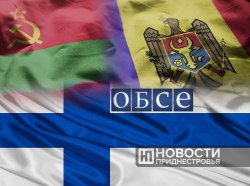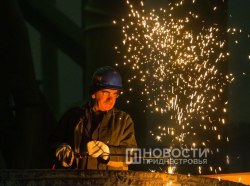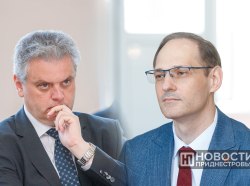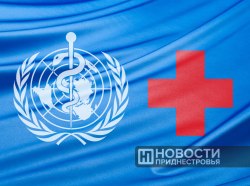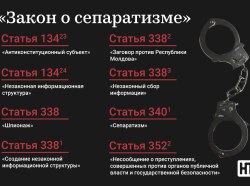On September 17, 2006, in Pridnestrovie there was held the seventh referendum, where 97.1% of those who took part in it voted for the independence of the PMR, followed by integration with Russia. This event is one of the main reference points in the history of Pridnestrovie.
The 2006 referendum, as well as the previous six plebiscites held in the republic, became an expression of absolute democracy, and its results were the main reference point for the authorities and a signal for the entire international community.
14 years ago, Pridnestrovians chose the path towards their homeland. After all, it was with the entry of the territory of Pridnestrovie into Russia at the end of the 18th century that the formation of a multinational Pridnestrovian identity began. Moreover, even during the collapse of the Soviet Union, the inhabitants of the PMR spoke in favor of preserving the large country. It should be emphasized that Pridnestrovie did not announce its withdrawal from the USSR and can be considered part of the legal successor of the Soviet Union - the Russian Federation.
Political Misalliance
Pridnestrovian and Moldovan co-existence as part of the Union Republic of the Moldavian SSR (MSSR) and the single political and economic space of the Soviet Union lasted almost 50 years.
But the inhabitants of the right and left banks of the Dniester had never become one community. And the events that took place in the late 80s could have been predicted back in 1940. Then, two different historical and cultural regions, differing in national population structure and economic potential, were united into one state formation.
First, after the period of the Romanian annexation of 1918-1940, Bessarabia was annexed to the Moldavian Autonomous SSR, which had existed on the territory of Pridnestrovie since 1924. But then from part of the territories of Bessarabia and the MASSR, the authorities of the Soviet Union created a new republic - the MSSR. Despite the fact that the historical destinies of the two regions developed in different ways and there was never anything in common between them.
The main goal of the MSSR project was to bring Bessarabia to Soviet standards as soon as possible at the expense of Pridnestrovie. By the beginning of the 1940s Bessarabia was the colonial outskirts of the underdeveloped Romanian state, while most industrial enterprises were concentrated in Pridnestrovie. It should be noted that at the end of the 80s, Pridnestrovie produced 40% of the GDP of the entire MSSR, while occupying only 13% of the territory of the union republic.
Separatism of Moldova
The logical break came in the late 80s, it was provoked by the events in Chisinau. The rampant nationalism led to the adoption of a discriminatory law on languages, which placed the peoples of the MSSR in an unequal position in relation to the titular nation.
Residents of Pridnestrovie, where there have never been conflicts on interethnic grounds, could not agree with the new nationalist values of Moldova and accept the idea of a titular nation. Multilingualism, cultural diversity, international thinking have historically been the hallmarks of Pridnestrovie. Let us recall that there are representatives of more than 75 nationalities and ethnic groups in the republic.
The proclamation of the Pridnestrovian Moldavian SSR on September 2, 1990 was the response of the Pridnestrovian people to the discriminatory policy of Chisinau. As a defense, the statehood that existed in 1924-1940 was recreated.
But one cannot fail to recall one more date - June 23, 1990. On this day, the Supreme Soviet of the MSSR adopted a declaration of sovereignty and declared the creation of the MSSR in 1940 illegal. As the President of the PMR Vadim Krasnoselsky noted more than once, Moldova thus de jure and de facto abandoned Pridnestrovie even before the re-establishment of the Pridnestrovian statehood.
“We remained in the Soviet Union`s womb. It was Moldova that seceded from the MSSR, not us. We are not separatists. The separatists are Moldovan officials who have destroyed the united republic,” PMR President Vadim Krasnoselsky said in a recent interview with Russia-24 TV channel.
Pridnestrovie Offered a Compromise, While Moldova Responded with Aggression
But even after that, Pridnestrovie agreed to one or another format of coexistence. Back in December 1990, Tiraspol offered Chisinau to create a new common state in the form of a federation, consisting of three republics - Moldova, Gagauzia and Pridnestrovie. But the Moldovan authorities refused to accept this offer.
After the disintegration of the USSR became irreversible, there was adopted a declaration of independence in Pridnestrovie, and on December 1, 1991, there was held a corresponding referendum. 97.7% of Pridnestrovians who took part in the voting voted for independence. A few months later, the armed aggression of Moldova against Pridnestrovie began. The RM called it establishing constitutional order, but in fact it was an attempt to occupy the territory. After all, as already mentioned, the Moldovan authorities themselves renounced Pridnestrovie two years earlier.
Nevertheless, Pridnestrovie continued to seek ways of coexistence with Moldova within the framework of one state entity. However, not a single proposed model, including Primakov's plan and Kozak's plan, was known to suit Moldova. Instead, Chisinau switched to a tactic of coercion, the main goal of which is to force Pridnestrovie to capitulate and dictate its conditions to the inhabitants of the republic.
In March 2006, Moldova took blockade measures against Pridnestrovie - export from the PMR became impossible without RM customs acts. This approach violated the provisions of the 1997 Memorandum, which recorded the right of Pridnestrovie to conduct its own foreign economic activity. It was all the same aggression, only by economic methods. Russia then saved the republic from a humanitarian catastrophe by transferring 230 tons of food and medicine to the population of the PMR.
Choosing a Path
The natural reaction to the blockade actions of the Moldovan authorities was the referendum held on September 17, 2006. It is important that it was not the politicians, but the Pridnestrovian people who decided which way the republic should go further.
Two questions were brought up for plebiscite:
"Do you support the course towards the independence of the PMR and the subsequent accession of the republic to the Russian Federation?" and "Do you consider it possible to renounce the independence of the PMR with the subsequent entry of the republic into the RM?"
The first was answered positively by 97.1% of voters. Voter turnout was 78.5%. On the day of voting, 174 international observers from the CIS countries and Western Europe were in the republic. None of them found violations. It was stated that the referendum complied with all the principles and norms of organizing and holding democratic elections.
This fact was confirmed by the State Duma of Russia. On October 6, 2006, it adopted a resolution “On the Results of the Referendum in Pridnestrovie on September 17, 2006”. It noted that “the referendum was held in full compliance with international legal norms, and its results should be taken into account by the international community to ensure peace and security in the region and a fair resolution of the Moldovan-Pridnestrovian conflict”.
The reaction of other countries, as we know, was quite different. The official representatives of the USA, Moldova, Ukraine, EU, OSCE and Council of Europe declared publicly about the non-recognition of the results of the Pridnestrovian referendum. The unanimity of the Pridnestrovian people, when determining the fate of their state, was not taken into account and simply ignored.
International Recognition is Inevitable
14 years have passed since the referendum. What has changed during this time? Pridnestrovie is still striving for independence and also regards Russia as its strategic partner and guarantor of peace in the region. The issue of international recognition remains one of the main issues in the "Development Strategy of Pridnestrovie" - a program document, the development of which was initiated by the President of the PMR Vadim Krasnoselsky.
It should be noted that today this issue is more of a technical nature and depends on the geopolitical situation. The Head of the Pridnestrovian State has repeatedly stressed this. Over its 30-year history, the republic has proven its sustainability, which is obvious to international partners.
“Therefore, I am convinced that sooner or later the international community will come to an understanding of the need to respect the opinion of Pridnestrovians and their justified desire to live independently in their native land. It's imminent. We have impeccable political and legal grounds for international recognition, and Pridnestrovie has been ready for it for a long time,” the Head of the Pridnestrovian State said in a recent interview to Parlamentskaya Gazeta.
Natalia Belous




